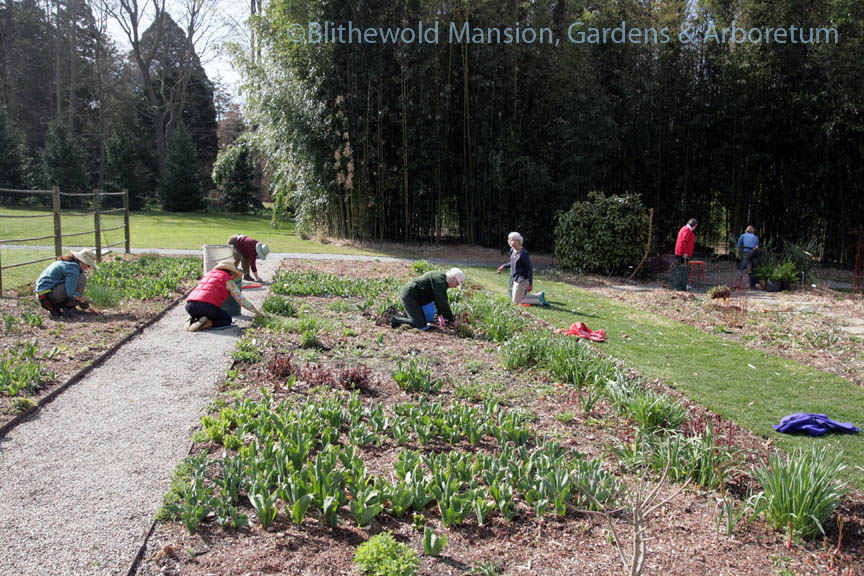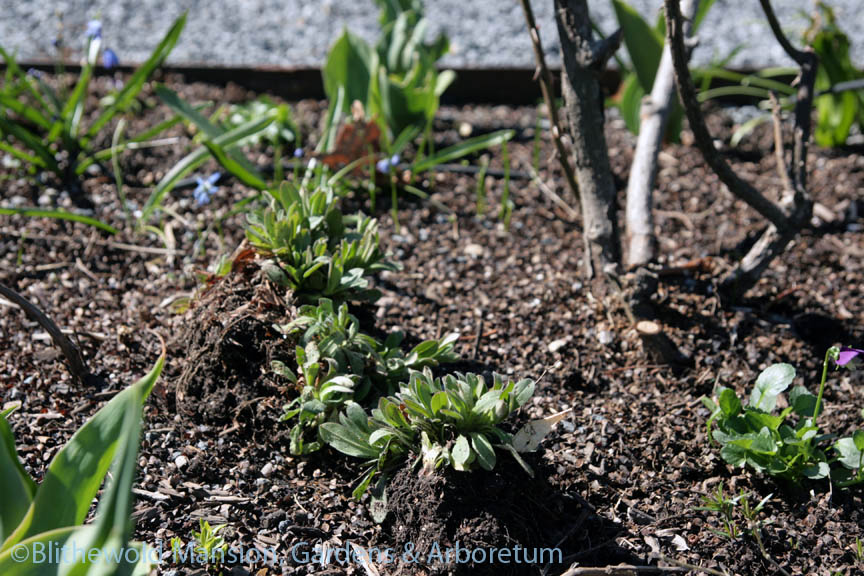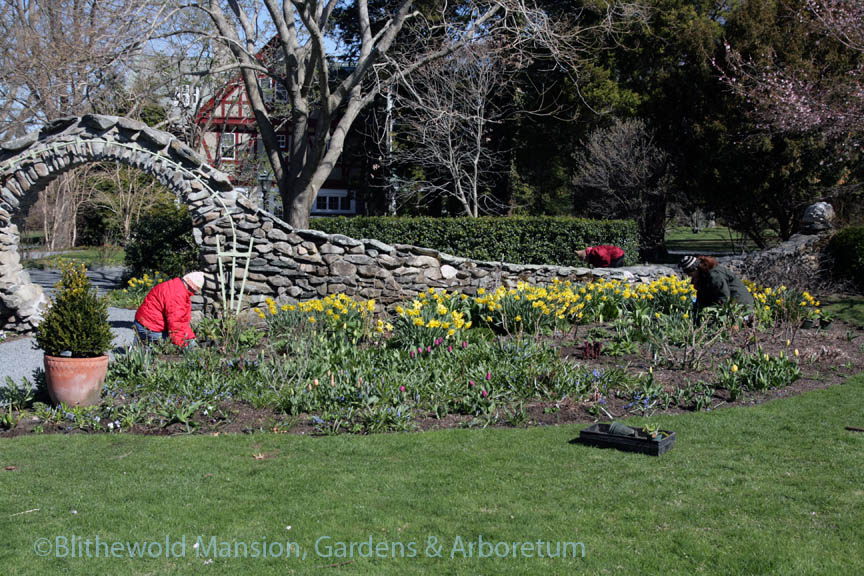Spring sprint
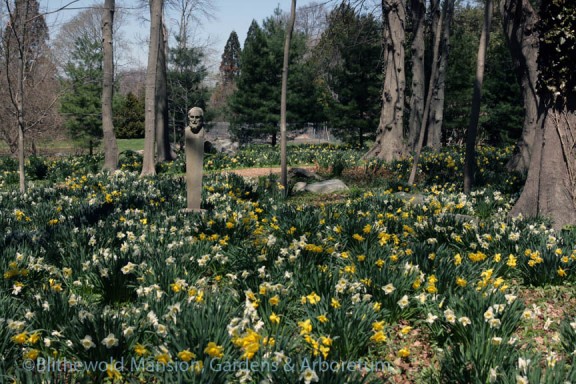
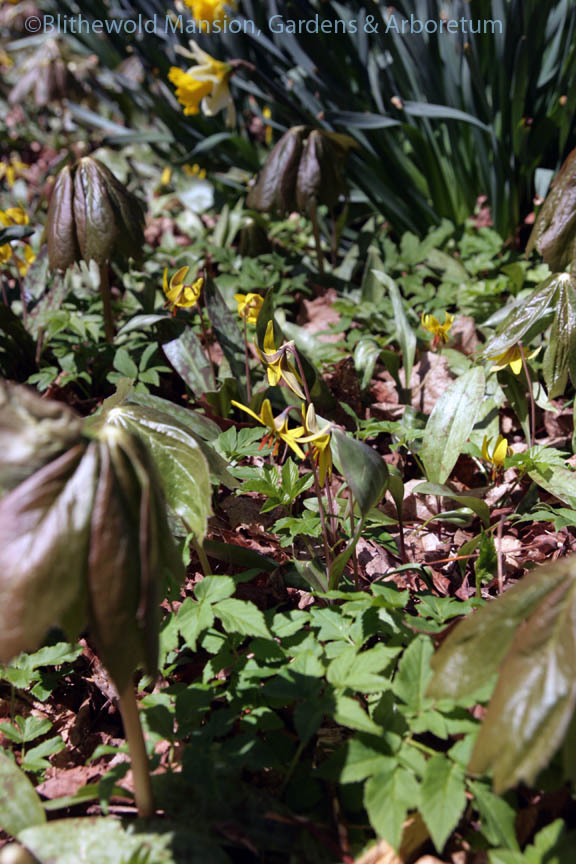 Over the last week – and the most glorious weekend – spring kicked it up a notch. Blithewold’s daffodils and trout lily are in full bloom carpeting the Bosquet in shades of sunshine. Mayapple umbrellas are poking up. The Rose Garden cherry trees (Prunus subhirtella ‘Autumnalis’) are out and the Water Garden Yoshinos won’t be long behind. Cool nights in the forecast should prolong the show but there’s probably (we hope) no stopping spring now.
Over the last week – and the most glorious weekend – spring kicked it up a notch. Blithewold’s daffodils and trout lily are in full bloom carpeting the Bosquet in shades of sunshine. Mayapple umbrellas are poking up. The Rose Garden cherry trees (Prunus subhirtella ‘Autumnalis’) are out and the Water Garden Yoshinos won’t be long behind. Cool nights in the forecast should prolong the show but there’s probably (we hope) no stopping spring now.
As spring picks up its pace, so must we. It’s high time to get a move on — literally. At the end of last week we started moving plants out of the greenhouse and into the shade for a week or so before planting. — So far we have only moved the cool crops like lettuce and the brassicas, and hardy annuals — sweetpeas and pansies, and biennials — lupine and foxglove. And now that more and more perennials are showing signs of life, coming up from the crown, we’re playing the memory game to properly identify them so that we can start playing our other favorite game: musical perennials. A game that requires a chess-like strategery because moving one thing means moving two or three others first.
Each spring we divide any perennials that have outgrown their spaces, moving chunks into fresh combinations and gardens. And we relocate others entirely — to give those that failed to thrive a new lease on life as well as to switch things up and change the view. This is also the perfect time to transplant biennials like forget-me-not and teasel, and self-sown perennials like brown-eyed Susan (Rudbeckia triloba) and sea holly (Eryngium planum). They’ll hardly even notice being moved – even the tap rooted eryngium – as long as they’re well watered in.
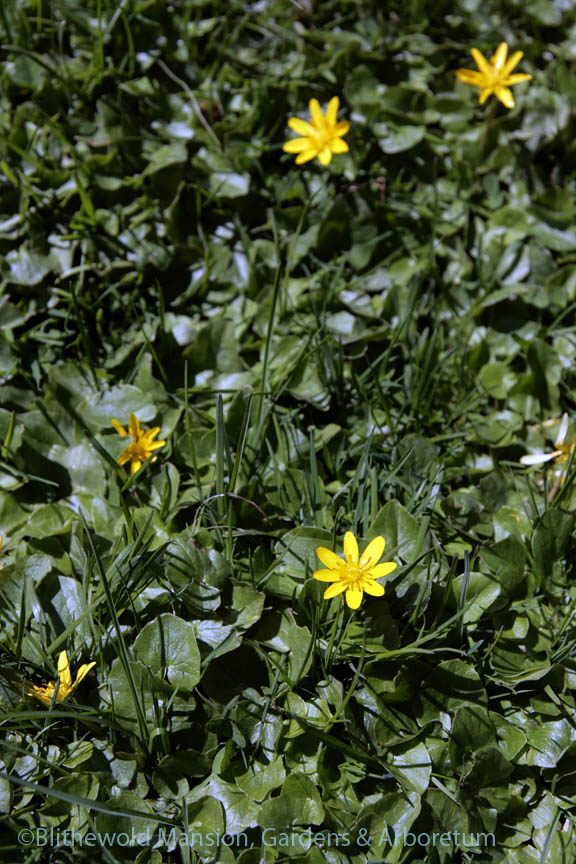 Meanwhile the weeds are waking up too and some buggers have started to bloom. I never mind the dandelions, especially now that I know beekeepers value their April flowers so highly for helping hungry colonies over the hump. Every year we have to re-identify lesser celandine (Ranunculus ficaria) — a European import that crowds out its native doppelganger, marsh marigold. Personally, I enjoy lesser celandine’s color in the lawn but it’s too much of a thug in the gardens. We have also been pulling out deadnettle, ground ivy, chickweed (my least favorite weed after crabgrass) and some overly vigorous strawberry.
Meanwhile the weeds are waking up too and some buggers have started to bloom. I never mind the dandelions, especially now that I know beekeepers value their April flowers so highly for helping hungry colonies over the hump. Every year we have to re-identify lesser celandine (Ranunculus ficaria) — a European import that crowds out its native doppelganger, marsh marigold. Personally, I enjoy lesser celandine’s color in the lawn but it’s too much of a thug in the gardens. We have also been pulling out deadnettle, ground ivy, chickweed (my least favorite weed after crabgrass) and some overly vigorous strawberry.
And we’re gearing up for Fairy Festival. Put your wings on, your wand in your pocket, and wish yourself over to the (magical) Enclosed Garden on Sunday from 10-3. Habitat for Fairies has been very busy gathering building materials and is set to begin construction!
Have you picked up your pace too? Are you playing musical perennials and/or building fairy houses?

